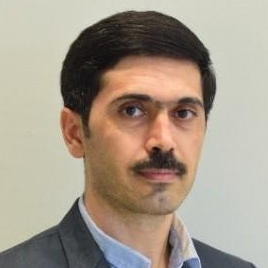Biopolymers for Tissue Engineering
A special issue of Polymers (ISSN 2073-4360). This special issue belongs to the section "Biobased and Biodegradable Polymers".
Deadline for manuscript submissions: closed (30 April 2021) | Viewed by 140564
Special Issue Editors
Interests: polymer engineering; biomaterials; tissue engineering; drug delivery
Special Issues, Collections and Topics in MDPI journals
2. Department of Tissue Engineering and Regenerative Medicine, Faculty of Advanced Technologies in Medicine, Iran University of Medical Sciences, Tehran, Iran
Interests: biomaterials; namomedicine; translational medicine; tissue engineering; advanced drug delivery
Special Issues, Collections and Topics in MDPI journals
Interests: polymer chemistry; functional polymers; hydrogels; membrane; polysacchrides; anti-corrosion polymers; colloids and nanopaticles
Special Issues, Collections and Topics in MDPI journals
Special Issue Information
Dear Colleagues,
Every year millions of people suffer tissues/organs loss due to trauma and diseases. The body has a low regenerative potential; hence, tissue engineering tries to regenerate the impaired tissue properly. On-demand replacing the tissue/organs is beneficial for millions of people who suffer the impaired tissue and wait for transplantation. Scientists and clinicians, motivated by the need to develop safe and reliable sources of tissues and organs, have been improving therapies and technologies that can regenerate tissues and, in some cases, create new tissues altogether. Tissue engineering and/or regenerative medicine are fields of life science employing both engineering and biological principles to create new tissues and organs and to promote the regeneration of damaged or diseased tissues and organs. Current tissue regenerative strategies rely mainly on tissue repair by transplantation of the advanced biomaterials. Tissue engineering scientists endeavor to recapitulate tissue behavior using various types of scaffolds. Advanced biomaterials designed for tissue engineering are mostly biopolymers with well-controlled surface and bulk properties because of their multifunctional tasks and biomimic, biocompatible and tunable properties.
Dr. PaYaM ZarrinTaj
Dr. Masoud Mozafari
Assoc.Prof. Farzad Seidi
Guest Editors
Manuscript Submission Information
Manuscripts should be submitted online at www.mdpi.com by registering and logging in to this website. Once you are registered, click here to go to the submission form. Manuscripts can be submitted until the deadline. All submissions that pass pre-check are peer-reviewed. Accepted papers will be published continuously in the journal (as soon as accepted) and will be listed together on the special issue website. Research articles, review articles as well as short communications are invited. For planned papers, a title and short abstract (about 250 words) can be sent to the Editorial Office for assessment.
Submitted manuscripts should not have been published previously, nor be under consideration for publication elsewhere (except conference proceedings papers). All manuscripts are thoroughly refereed through a single-blind peer-review process. A guide for authors and other relevant information for submission of manuscripts is available on the Instructions for Authors page. Polymers is an international peer-reviewed open access semimonthly journal published by MDPI.
Please visit the Instructions for Authors page before submitting a manuscript. The Article Processing Charge (APC) for publication in this open access journal is 2700 CHF (Swiss Francs). Submitted papers should be well formatted and use good English. Authors may use MDPI's English editing service prior to publication or during author revisions.
Keywords
- Biopolymers
- Tissue engineering
- Regenerative medicine
- Natural polymers
- Biomaterials
- Scaffold
- Biodegradable
Benefits of Publishing in a Special Issue
- Ease of navigation: Grouping papers by topic helps scholars navigate broad scope journals more efficiently.
- Greater discoverability: Special Issues support the reach and impact of scientific research. Articles in Special Issues are more discoverable and cited more frequently.
- Expansion of research network: Special Issues facilitate connections among authors, fostering scientific collaborations.
- External promotion: Articles in Special Issues are often promoted through the journal's social media, increasing their visibility.
- Reprint: MDPI Books provides the opportunity to republish successful Special Issues in book format, both online and in print.
Further information on MDPI's Special Issue policies can be found here.
Related Special Issue
- Polymers in Tissue Engineering in Polymers (46 articles)








